- Administrator
- Albums and Singles
 This long awaited, much delayed "best-of" release doesn't come close to the grandeur of the new Fad Gadget package, though it satisfies a long overdue need to formally acknowledge Nitzer Ebb as groundbreaking revolutionaries, the shockwaves of their speaker-rattling, dancefloor devastating diatribes still being felt in electronic music today.
This long awaited, much delayed "best-of" release doesn't come close to the grandeur of the new Fad Gadget package, though it satisfies a long overdue need to formally acknowledge Nitzer Ebb as groundbreaking revolutionaries, the shockwaves of their speaker-rattling, dancefloor devastating diatribes still being felt in electronic music today.Many contemporary techno producers are deeply in the debt of Bon Harris and Douglas McCarthy, who while not godfathers of that scene are at least cherished uncles. Novamute's decision a few years back to press to wax official remixes of Nitzer Ebb anthems from artists like Terence Fixmer, Thomas P. Heckmann, and The Hacker couldn't have received a better reception. Since then, you'd be hard pressed to go to just about any hard techno event in the known world without hearing at least one of these bangers. Although a companion release featuring those reworks and others was also made available on CD recently, Body of Work, a compendium of 32 tracks including an entire disc of selected mixes, will hopefully acquaint at least some of those revellers with the originators' originals.
Starting from the promising metal-on-metal spark of Warsaw Ghetto b-side "Isn't It Funny How Your Body Works," ending on Big Hit lackluster "I Thought", and hitting all the necessary points in between, the first half of this double disc committedly runs through Nitzer Ebb's recording career, warts and all. Of course the hits are covered, with "Join In The Chant" and "Control, I'm Here" sounding just as incredible now as they did when I first heard them as an angsty teenager in New York City clubs. Though their best known cuts came off This Total Age and Belief ("Murderous" and "Hearts And Minds" being my personal favorites from those), there were several quite memorable singles from the subsequent, less acclaimed Showtime and Ebbhead records. "Getting Closer" and "Fun To Be Had" might not have been furious fist pumping anthems like "Let Your Body Learn," though they showcased the duo pushing their sound further, and successfully at that. The same cannot be said for the selections from 1995's Big Hit, which over a decade later still disappoint and frustrate even their most devoted fans. I'm almost certain that nothing from that critical and commercial flop even made it into the setlists of their North American reunion tour this year.
What makes this compilation particularly worthwhile even for those who own all these albums is the inclusion of selected material found on the singles, including rare songs and remixes that retrospectively deserve more exposure. Many of these treats are found on the second disc, my favorites being the alternate mixes, a number of which are only available on long out-of-print singles. Ranging in style from the grit and grime of "Shame (Mix Two)" and "Control I'm Here (Strategic Dancefloor Initiative Mix) to the funkier "Fun To Be Had (Long Version)" and "Hearts And Minds (Mix Hypersonic)," today's technoheads can get a crack at dropping these into their current sets without digging endlessly through musty used record store crates.
For years now, rumors have gone around regarding a retrospective release for Nitzer Ebb. That being said, I find it extremely frustrating that Mute failed to offer any visual component, as a DVD encompassing the videos and some live performances from the band was anticipated for some time. Regardless of fault, the omission of this material is disappointing, and I can only hope that at least a video collection can be salvaged from this historically rocky artist-label relationship. Of course, considerably more desirable would be a new Nitzer Ebb album, and I don't give a fuck who puts the damn thing out.
samples:
Read More
- Administrator
- Albums and Singles
 Andy Cabic finally steps out from under the shadow of pal Devendra Banhart on this follow-up to Vetiver's self-titled debut. While there are some standard folk moments, much of the album points to an expansion of the band's sound.
Andy Cabic finally steps out from under the shadow of pal Devendra Banhart on this follow-up to Vetiver's self-titled debut. While there are some standard folk moments, much of the album points to an expansion of the band's sound.
The album opens with the quasi-mystical drones of "Been So Long," and it’s not long before some Indian-influenced drumming enters the picture alongside Cabic's vocals. Cabic's guitar remains in the background for much of the song, and it’s a refreshing way to begin this album considering how guitar-oriented the group’s first effort was. "You May Be Blue" is also a change of pace, relying more on a bottom-heavy rhythm rather than a melody to convey its urgency. "No One Word" hearkens back to Vetiver's earlier work, but the addition of a graceful slide guitar is a pleasant update.
The album hits a dull spot in the middle with songs that aren't a whole lot different from other things the group has done. I like the drums on "Idle Ties," but the song as a whole is little boring, as is the lengthy "I Know No Pardon," which follows. "Double" marks another change for the better with subtle drones that eventually open up into a sweeping string section. An even greater divergence is "Red Lantern Girls," which ends in a searing electric guitar outro that's more exuberant and energetic than anything I've heard recorded by this group so far.
Cabic can get a little too sentimental when the mood strikes him, and a succession of such material becomes a little numbing. Also, his singing style strays too far into Banhart territory sometimes, which isn't terribly surprising. Yet despite these flaws, this album is a remarkable improvement over the debut. Cabic's songwriting has undergone tremendous growth in the intervening years, and this recording is the proof.
samples:
Read More
- Administrator
- Albums and Singles
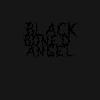 Campbell Kneale’s one man doom project is a work of immense force. Taking some influence from his other project, Birchville Cat Motel, Bliss and Void Inseparable is an intense and atmospheric journey through the dark. I must point out that the title does not capture the mood of the album, I can identify the void components but the bliss is well hidden. This album is desolate and soul destroying, I love it.
Campbell Kneale’s one man doom project is a work of immense force. Taking some influence from his other project, Birchville Cat Motel, Bliss and Void Inseparable is an intense and atmospheric journey through the dark. I must point out that the title does not capture the mood of the album, I can identify the void components but the bliss is well hidden. This album is desolate and soul destroying, I love it.
20 Buck Spin
Starting with what sounds like a gargantuan Lovecraftian nightmare slowly plodding in the distance along a black chasm, this hour long piece immediately sets me on edge. The ambience that Kneale builds up recreates that paranoia that is only present at 2am when there is no one to turn to. When that Lovecraftian nightmare finally arrives there is an abundance of high pitched howling which sounds absolutely terrifying. A buzzing, didgeridoo-sounding chant further brings the mood down. As the packaging suggests, at high volumes this racket is transcendental (but not in the blissful way as I think Kneale may have intended).
After 17 minutes of this amazing dirge, the guitars and drums rip into the mix. At first it felt like a bit of a letdown after such an incredible introduction. However once I got over the shellshock and got into Kneale’s treacle-like riffing I was captured again. The tone on the guitar is filthy. It sounds like the guitar was dragged through the gutter and the amp was cursed before it was recorded in a tomb. The drumming is basic, just a primal beat harking back to the plodding nightmare sounds of the section of the piece.
What strikes me as being one of the most powerful parts about Bliss and Void Inseparable is the lack of "proper" vocals. Some of the new wave of doom bands try and vomit their lungs up in an attempt to be grim. Kneale dispenses with lyrics and his vocals are used sparingly to form something more like an ill wind blowing through a crevice on a bleak mountainside. The grinding riffs mutate into a more tolerable but equally crushing feedback and piano refrain. Like pretty much everything else used to make this album, it is chilling to listen to.
By the end of the disc I am exhausted and feel like I need a shower to get the grime off me. Actually, even halfway through I feel like stopping because it is so heavy but perseverance pays off because I feel like I have done a marathon by the time it is over. Maybe this listening equivalent of the runner’s high is the bliss that Kneale refers to in the title. I feel like I have earned the privilege of putting the CD back in its sleeve, I would not be able to listen to this all day every day but Bliss and Void Inseparable is the sort of heaviness that I need from time to time to clear the cobwebs (and annoy the neighbours).
samples:
Read More
- Administrator
- Albums and Singles
 The beautiful photographs of little houses in the countryside capture the vibe of You Are My Home succinctly. The album very much encapsulates the feeling of being very small in a wide open space, unable to do anything but sit and take in the splendor of the surroundings. Nathan Amundson's songs are deceptively simple. They are gentle but with a hidden strength that only occasionally erupts (and when it does come through it is impressive to say the least).
The beautiful photographs of little houses in the countryside capture the vibe of You Are My Home succinctly. The album very much encapsulates the feeling of being very small in a wide open space, unable to do anything but sit and take in the splendor of the surroundings. Nathan Amundson's songs are deceptively simple. They are gentle but with a hidden strength that only occasionally erupts (and when it does come through it is impressive to say the least).
Important
The majority of the songs are fine examples of songcraft. Amundson is joined by an all-star group of musicians (featuring the likes of Jessica Bailiff; Chris Brokaw of Come, The New Year, Pullman and more; and Shellac’s Bob Weston) who are well able to flesh out his compositions into gorgeous productions. “Happy Ending” which not surprisingly sits near the end of the album is a stunning piece, although despite the name there are more melancholy feelings present than happy ones. This song is not alone as nearly all the pieces capture a delicate and lovely sadness. To me the songs are not sad songs but they capture a feeling that is at the same time wonderful and despondent. I hesitate to use the word duende but it is a similar feeling. It is that same feeling of being snuggled up under the blankets after a long day and the rain is beating against the window.
From time to time the musicians flex their muscles on songs such as “Can't I Wonder” and “Win or Lose.” The former is a slow burner where the final third or so of the song is where it lets loose. On the latter, when the trumpet kicks in, the song gets lifted up into this realm of beautiful simplicity that is hard to hit. Here the convention would be to let the trumpet rise and rise until it overcomes the listener but there is a tight leash on Weston's trumpeting so the effect is not spoiled. On both songs, the pace is quicker than on the other songs which gives them extra exuberance (but still maintaining the almost despondent aura of the album).
You Are My Home is one of those albums that I am delighted to discover (I use the term “discover” loosely, it is not like I found it in a basement under a pile of James Last records) and will no doubt plague my friends into hearing. This is an absolute gem of an album and I cannot stop playing it.
samples:
Read More
- Administrator
- Albums and Singles
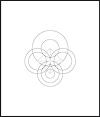 If the original Hafler Trio performances and releases of How to Slice a Loaf of Bread can be seen as full meals, Colin Potter’s reworking is a compact collection of ideas shoved into one of those toasters that squish the sandwich into a condensed snack. A Pressed On Sandwich doesn’t cover the depth and breadth of the original releases but Potter does augment the material into a worthy piece in its own right.
If the original Hafler Trio performances and releases of How to Slice a Loaf of Bread can be seen as full meals, Colin Potter’s reworking is a compact collection of ideas shoved into one of those toasters that squish the sandwich into a condensed snack. A Pressed On Sandwich doesn’t cover the depth and breadth of the original releases but Potter does augment the material into a worthy piece in its own right.
Nextera
Despite being the work of Colin Potter, this album looks, sounds and reads like The Hafler Trio. A Pressed On Sandwich is instantly recognisable as being cut from the same loaf as the original releases, Potter hasn’t gotten rid of any of the sounds’ identities. He takes an overview of all the sonic landscapes initially conjured up by Andrew McKenzie creating a digest of the source material. Indeed a quote of Potter’s in the press release acknowledges this, stating it was his “intention to preserve the overall shape and sense of the material, but at the same time move it to another (sonic) place.” There is a completely different mood and space captured here and as short as it is (just over 18 minutes compared to the 5 hours plus of How to Slice a Loaf of Bread) it is obvious that there’s more to this sandwich than the two slices of bread on the outside.
The piece begins with a slowly changing drone and crumbs of sound popping from the speakers, not very interesting at normal volumes but extremely rich in texture when the volume is turned up to a sensible level. There isn’t the same slow build up with Potter’s work and at first it seems that there isn’t as much time to relish in the details. Granted it’s nowhere near hyperactive but it does seem to rush through the sounds relative to the more reserved pace of How to Slice a Loaf of Bread. This isn’t a problem in the least; it is merely a different approach by Potter to put his own spin on the material. It does eventually level out into a meditative throb that takes on the religious character present on How to Slice a Loaf of Bread. This flows into the final section where there is a heavy emphasis on high frequencies. I found this last portion painful to listen to, even at low volumes. This deters me from always listening the whole way through as more than once I’ve been left with a headache after playing the full piece.
Potter has done such a wonderful job on this release, doing justice to McKenzie’s own inimitable work even if it caused me physical pain. In addition, until a McKenzie-approved reissue of the How to Slice a Loaf of Bread discs happens, A Pressed On Sandwich is as close as many will get to hear it.
Read More
- Administrator
- Albums and Singles
 Sheffield label Singing Knives have gathered together some of the city's more appealing noise/folk underground (and their peers) here showing that it's certainly not a city still in thrall of Warp's legacy and output. The similarity between these acts is pretty loose, but most appear to work within or around the use of traditional forms / instruments, improvisation and drone or a combination of the two styles.
Sheffield label Singing Knives have gathered together some of the city's more appealing noise/folk underground (and their peers) here showing that it's certainly not a city still in thrall of Warp's legacy and output. The similarity between these acts is pretty loose, but most appear to work within or around the use of traditional forms / instruments, improvisation and drone or a combination of the two styles.
The vast majority of compilations will contain a couple of fast-forward stinkers, but this is relatively rare in that regard; there isn't a duff track here. From the opening Halloween at Christmas squall of Tirath Singh Nirmala’s title track to McWatt’s wearily gorgeous "Untitled," this is a route that winds between conventional and abstract musicality. The simple folky bent of Peril Hill and Feather Gatherers don’t suffer from being programmed up against the braised trapped chord hum of more established acts like Chora.
The songs that take the less established route, flowing into improvisational heavens could do with extending a touch; there’s nothing worse than coming out of a trace too early. The lava lamp ambience of Ben Reynolds and Big Eyes Family Players feel particularly brief, sucking me in and spitting me out too soon. Competing for this release’s finest moment are Directing Hand and their chilling obsessive take on "Down in Yon Forest" and Michael Flower Band's frantic toe tapping swoon of "Santa Flauta." Compilations don't always need central themes, concepts or strictly adhered to genre rules if they can keep up the quality quota like me Singing at the Moon.
samples:
- Directing Hand - Down in Yon Forest
- Nalle - Are You Beautiful Inside? Are You Here?
- Michael Flower Band - Santa Flauta
Read More
- Administrator
- Albums and Singles
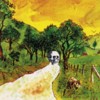 With their latest album of pastoral folk pop, Glenn Donaldson and Donovan Quinn seem determined to let everyone know where they're from, in case there were any doubts.
With their latest album of pastoral folk pop, Glenn Donaldson and Donovan Quinn seem determined to let everyone know where they're from, in case there were any doubts.
 
It's not just the insular title of the album that roots them in California, but also the Byrds-esque guitars and light pop harmonies that anchor them as much as anything else. Yet it’s not California as a place to which they lay claim, but rather California as an ideal, and it’s an important distinction that unfortunately makes them anachronistic. Rather than updating or contemporizing the folk sound of the ‘60s to say something about today’s culture, like Donaldson does with some of his other bands, here they revive it mostly intact. Although they do this sort of thing well, it comes across as a form of nostalgia for a time in which the musicians never lived, which is kind of a pointless exercise.
There isn’t a whole lot of ground here that the group didn’t already cover on last year’s Life & Love in Sparrow’s Meadow. One change, however, is the addition of a rhythm section. While the songs lack emotional distinction, it’s only the new rhythm section that lends them any personality. The most redeeming factor of the album is the strange twist of the lyrics, but even these are disguised under so much convention that their impact is lessened, if they’re noticed at all. The smugness of a song like "Jesus Was Californian" doesn’t help things, either.
Don’t get me wrong, the album sounds great for a revival act. The music’s pleasant enough and their harmonies are decent, but the songs don’t say anything to me that I haven’t already heard many times over from the original source material itself. I can’t help wonder why the band would bother other than to prove that they can.
samples:
 
Read More
- Administrator
- Albums and Singles
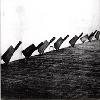 The selection of butcher knives that adorns this lathe-cut's cover isn't really an apt representation of its contents. Anyone expecting great slab splitting chunks of noise will be sorely disappointed, this is a far more in-depth and busy release. Creating a no-mans land between noise and psychedelic crystallised drone, this is a restless listen where a thousand Catherine wheel cogs of sound sync and separate.
The selection of butcher knives that adorns this lathe-cut's cover isn't really an apt representation of its contents. Anyone expecting great slab splitting chunks of noise will be sorely disappointed, this is a far more in-depth and busy release. Creating a no-mans land between noise and psychedelic crystallised drone, this is a restless listen where a thousand Catherine wheel cogs of sound sync and separate.
The unspooling speaker roughage that rushes out is like an aural spot painting made with vinyl silt. There's beauty in the purée that's otherworldly, totally unidentifiable, and thankfully never rises to the generic storm. Unidentified flying pieces of resonating treble take off from the track, bumping into the bottom-end sounds of an aircraft takeoff; both forming dislocated swarms. These galvanic circling energies may appear sourceless on the first few runs, but further listens offer up little roots.
Their collective noise (I'm assuming they're a collective, anyway) shows no signs of being inclement here, there's a no-negativity inherent in the sounds. I'm not claiming this is soft bath-time ambience, but there's something enjoyably uncontaminated about this record.16 Bitch Pile-Up are a soothing static flecked unguent on the throbbing wounds of improvised noise music.
samples:
Read More
- Administrator
- Albums and Singles
 One of the most underexposed and exciting reggae vocalists today, Paul St. Hilaire delivers the kind of album his associates Rhythm & Sound should have produced this year.
One of the most underexposed and exciting reggae vocalists today, Paul St. Hilaire delivers the kind of album his associates Rhythm & Sound should have produced this year.
Although fairly well known in certain circles, the artist formerly known as Tikiman operates largely out on the fringes of the reggae music community, an Achilles' heel that offers both challenges and opportunities. Having worked with a number of noteworthy producers from well beyond the Carribbean, such as The Bug, Modeselektor, and Scion's René Löwe, Hilaire's work for his Germany-based False Tuned vanity label attempts on some level to return to his island roots. While his sophomore self-produced album adheres to a rootsy reggae standard at least lyrically, years of genre-crossing collaboration has informed Hilaire's sense of music composition. Accordingly, Adsom - A Divine State of Mind shows an artist truly coming in to his own.
A much more consistent extension of 2003's Unspecified, the album kicks off with the subdued "Little Song," arguably the track that listeners familiar with the aforementioned partnerships will most likely connect best with. Here, Hilaire's somewhat aged voice soars over a burbly dub soundtrack, familiar territory to be sure though certainly well executed. Also in that vein, the deep watery textures of "Humble" could have come right from the mixing desk of Mark Ernestus and Moritz Von Oswald. Beyond that, however, Hilaire largely rejects uniformity and demonstrably embraces the diversity of his career. "Peculiar," for one, is carried by an unmistakably bluesy flair found almost exclusively on albums from Skip McDonald's unmatched Little Axe project. Such shrewd deviation from the Showcase model proves that he is not content to pantomime past successes. Hilaire is comfortable playing the purist on something like "Jah Live Over The Hills", previously released as a Tikiman CD single in Europe back in 2002, as well as playing to a contemporary R&B vibe akin to Beres Hammond on the closer "Roosty".
However, "Fortunate" is the true standout of the album, a groover delivered from atop the soapbox whose infectious hook is sung in chorus with what I assume from the credits are his own children. If commercial radio still had a taste for reggae music beyond dancehall, this would be playing all over town like a slightly softer "Welcome To Jamrock", and if there isn't at least one station in Jamaica rocking this one then that entire nation is missing out. As it stands, enough insulation exists to unfairly keep an outstanding artist like Hilaire from thriving to the extent Adsom so clearly proves him worthy of achieving. I can only hope that this boundary emboldens rather than weakens him, bringing the promise of even stronger, more engaging releases for years to come.
samples:
Read More
- Administrator
- Albums and Singles
 Dressed in black, as ever, this Prurient lathe sits more easily alongside his recent Load release Pleasure Ground than his circuit board slaughter. This track leans a little less on the ripping-out-throats-with-teeth style and more on a knife edge tension tip. This is more like slow insidious mental torture than someone merzbowing your face into a pulp.
Dressed in black, as ever, this Prurient lathe sits more easily alongside his recent Load release Pleasure Ground than his circuit board slaughter. This track leans a little less on the ripping-out-throats-with-teeth style and more on a knife edge tension tip. This is more like slow insidious mental torture than someone merzbowing your face into a pulp.
There are noticeable, albeit brief, rhythms in the avalanche alongside tower levelling greater bass pulses. Several ominous silences don’t make this any less scalding, the spew creeping like brittle ossification. The weight of this lathe comes in speedily rising increments of needle under fingernails pain. Prurient's rage sounds all the more rotted and dark with the focus of the lyrics here.
It's difficult to make out all the words in Prurient's full verse, the vocal fx and the crushed salvo of rolls obliterating some of it. His spoken word soliloquy comes somewhere between Slint's Brian McMahan and something on the darker side of the now fallen Rollins. Although with Prurient we are safe in the knowledge that he won’t be appearing in any shitty commercial movies anytime soon.
samples:
Read More
- Administrator
- Albums and Singles
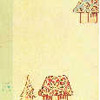 The world is shockingly louder after hearing Andrew Chalk's work. This is true of many of his pieces, but seems most applicable to the reissue of East of the Sun. Originally released in 1994 on cassette by OR (Ora's label), the album is as quiet and reserved as they come, teeming with invisible life that always seems just beyond the reach of the human ear. There's plenty going on in these washes of sound, but everything seems consciously subliminal from the second the album begins.
The world is shockingly louder after hearing Andrew Chalk's work. This is true of many of his pieces, but seems most applicable to the reissue of East of the Sun. Originally released in 1994 on cassette by OR (Ora's label), the album is as quiet and reserved as they come, teeming with invisible life that always seems just beyond the reach of the human ear. There's plenty going on in these washes of sound, but everything seems consciously subliminal from the second the album begins.
Faraway Press
Chalk's records always feel like something special, his Faraway Press releases are especially unique and memorable because they're so carefully assembled. East of the Sun comes in a heavy duty gatefold case with elegant and simple artwork. The inside contains only the most pertinent information and a single photograph, presumably of Chalk. As heavy as the packaging may be, the music is perhaps the most delicate Chalk has ever assembled. There are no monumental drones to speak of or massive washes of sound that swim out of the music. Everything is a gentle, microscopic whisper. Even with the volume turned up to its fullest, both "Winter Arc" and "High Water" seem dark and distant, glimmering only faintly, suggesting some distant signs of life.
When the music does uncover itself most blatantly, the resonance and power of the sounds involved is undeniable. The simplicity of both compositions remind me of taking a long walk and being lost in thought or, perhaps more strongly, the sudden realization that there's something going on around you that was not or had not been immediately evident. There are no big surprises on this album: everything comes naturally, but the way Chalk's various sounds work their way in and out of the mix demands repeated listens. I found myself asking where certain sounds came from and how they managed to sneak into the mix without me noticing them earlier.
In the right environment this is a splendid aspect of the album: it commands a quiet place and causes the ears to listen harder, be more attentive. If a quiet place is impossible to find, then this record is difficult to hear and gets subsumed into other noises. I was washing my clothes in the basement while listening to this album upstairs and it slowly fused with the whirl of the washing machine. There's nothing inherently wrong with a quiet album, but unless combining music with household appliances sounds like fun, this album is perhaps best suited for the quietest of times or for a pair of good headphones.
samples:
Read More

